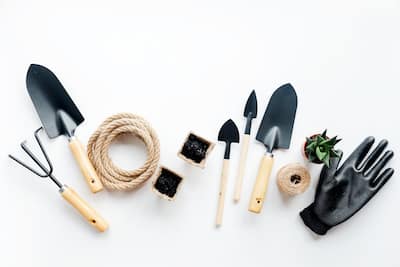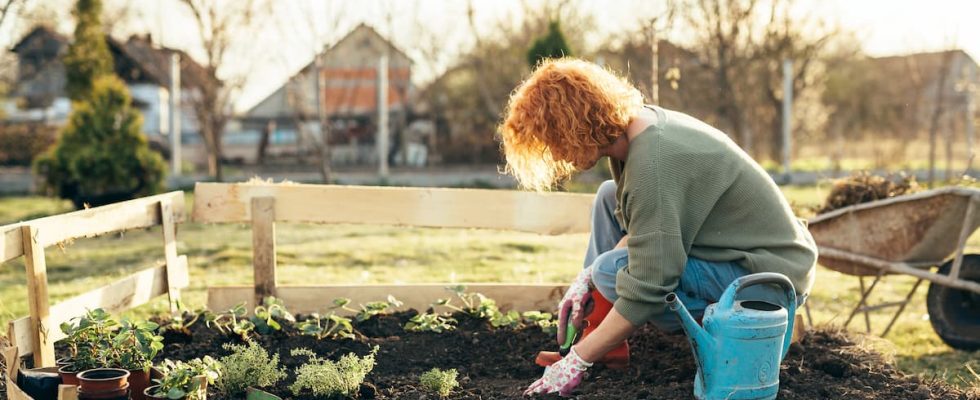The spring breakthrough and mild days have awakened the energy of many amateur gardeners. But can we really take advantage of this early spring to start our outdoor work?
Yes, the sun is shining and the temperature is warm, but only on the surface does everything seem perfect for gardening. “Be careful, the ground remains frozen at depth, and therefore damp and soft over the first few inches. So, before moving too much on the lawn and flowerbeds, we check if it is not too soft,” warns Émilie Desnoyers, designer and project manager at Les Innovations paysagées Ladouceur. This prevents us from damaging the floor.
But if we are careful, some actions can be carried out, such as removing winter protection – if possible on a rainy day to avoid sunburn to our plants –, cutting the perennials that we did not cut in the fall, picking up leaves and prune broken branches from our trees.
Already in flower?
Some spring bulbs may begin to bloom. This is the case with crocuses which we see even through the snow. “Then will follow the daffodils and daffodils. Two factors influence their output: ground temperature and brightness. Then, among the shrubs, it is the forsythias which will be covered with yellow flowers in May. The magnolias will also be there early in spring,” says Émilie Desnoyers.
Crocus
Adobe Stock
The mild winter we had will have repercussions on our flowers. And not the ones we think. Some flowers will not have benefited from their usual protection. “It is the snow cover that protects dormant plants from extreme cold and temperature variations. As this winter we had little snow and very cold weather, it would be normal to have higher losses than usual with our plants. Curiously, certain plants that are more sensitive to cold weather will be easier to grow in colder regions, because the snow cover and therefore the insulation are much greater there,” explains Ms. Desnoyers.
Tempting, but you have to wait!
We must know how to moderate our ardor despite this mild spell. “Since it’s still cool at night and even some days, it’s too early to take our houseplants and seedlings out. It is also too early to fertilize the soil. You can collect dead leaves and put them in the compost. To dethatch the lawn, you can sweep the leaves if the ground is not too soft and if you notice that the grass is greening up and new shoots are coming out. However, if a snowstorm occurs, we will have to start again when real spring arrives! Later, when the garden centers are open, it will be time to go get the fertilizer and mulch to finalize the opening,” she explains.
Finally, we have to test our patience a little more, because the risk of frost and snow is still very present. We saw proof of this last weekend. “The best indicator of the ideal time to get started is when garden centers open and products become available,” says Émilie Desnoyers.

Daffodil
Adobe Stock
And our seedlings?
- We refer to the sowing calendar according to our hardiness zone
- We start them indoors in March so that we can put them in the ground in the first week of June, give or take a few weeks, depending on our zone.
- First: onions, leeks, basil, cabbage and peppers.
- Next: broccoli, cauliflower, lettuce and tomatoes.
- Finally: cucumbers and zucchini (because the plants can expand quickly)
*Celery plants are for experienced gardeners only since they are very difficult to grow indoors.
*Root vegetables are sown in the ground in your vegetable garden.
- Our seedlings need a very sunny location and high ambient humidity. If necessary, germination lamps are added if the lighting is not adequate.
- We use a spray bottle to water them.
- They are placed under transparent covers which will create a greenhouse effect.
The right tools
Among the tools that you should not skimp on when purchasing, there are the leaf broom and the pruning shears. Next, “every gardener should also have a well-sharpened round shovel and a square shovel. Finally, if you have a vegetable garden, a rake, a 3-tine weeder and a hoe are essential,” advises Ms. Desnoyers.
And you also have to choose the soil you use carefully according to the type of use (beds, lawns, containers, gardeners, urban vegetable gardens, etc.). “People often tend to go for the cheapest potting soils, be careful! You won’t have the same results for sure! It is better to invest in good land given the effort to use it. The earth is the basis of everything. Even if you have the best sunlight and adequate watering, without good soil you won’t get far,” she says. For large areas, you can choose bulk products and then amend them with compost or manure. “The important thing is to have soil rich in organic matter, with a balanced PH and free of weeds. Above all, we avoid black earth, because its pH is much too acidic and very poor in minerals and organic matter,” she recalls.

Good tools make good gardeners!
Adobe Stock
